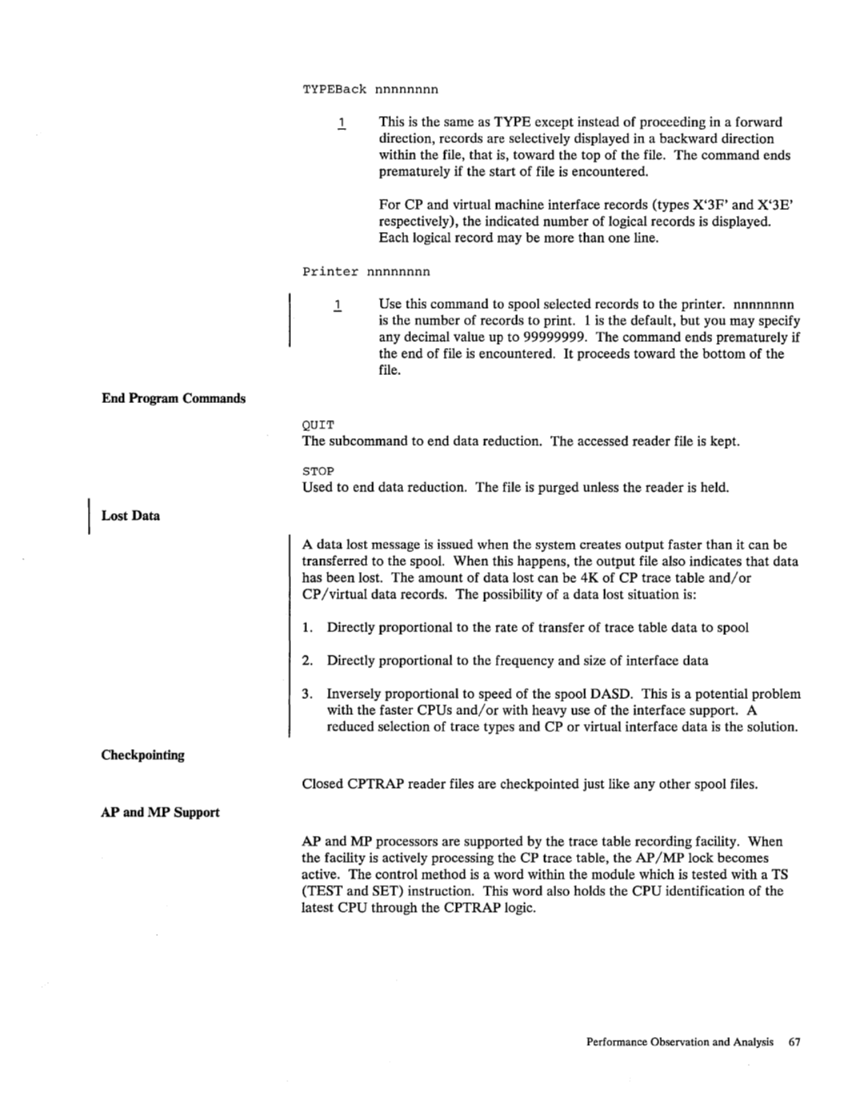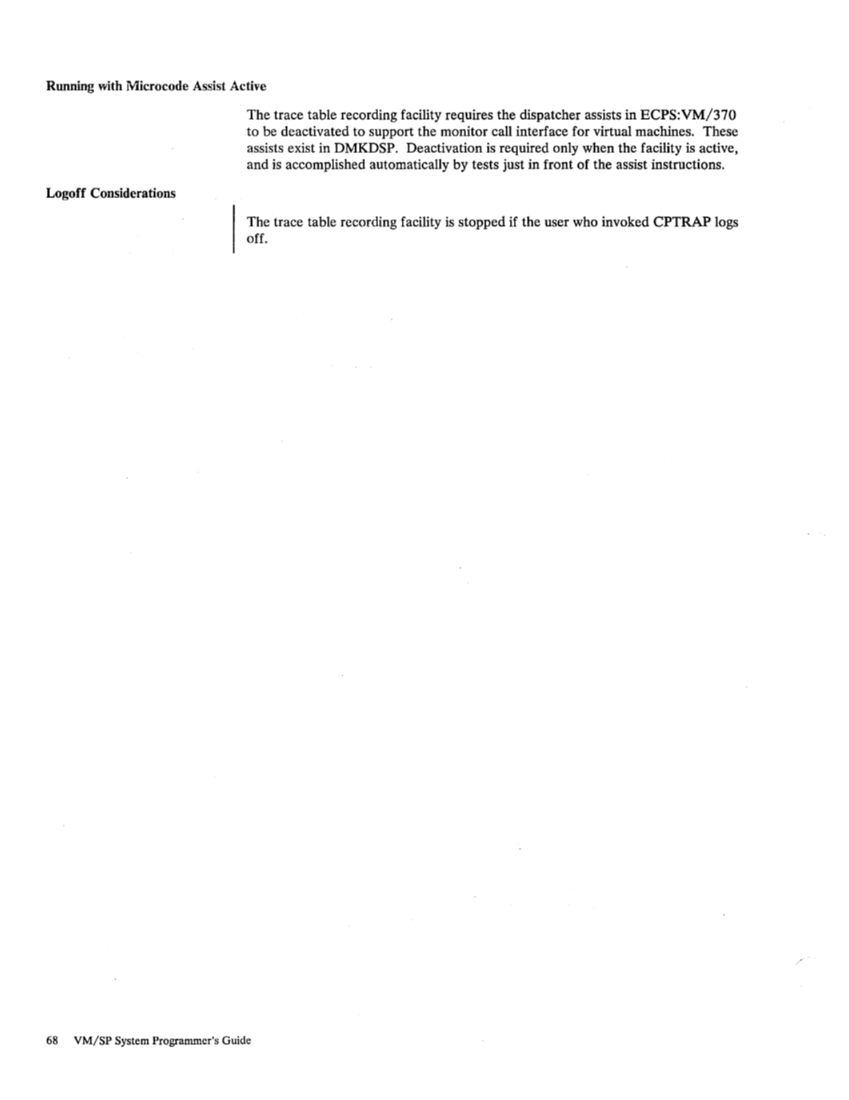End Program Commands I Lost Data
Checkpointing
AP and MP Support
TYPEBack nnnnnnnn
This is the same as TYPE except instead of proceeding in a forward
direction, records are selectively displayed in a backward direction
within the file, that is, toward the top of the file. The command ends
prematurely if the start of file is encountered.
For CP and virtual machine interface records (types X'3F' and X'3E'
respectively), the indicated number of logical records is displayed.
Each logical record may be more than one line.
Printer nnnnnnnnQUIT 1 Use this command to spool selected records to the printer. nnnnnnnn
is the number of records to print. 1 is the default, but you may specify
any decimal value up to 99999999. The command ends prematurely if
the end of file is encountered. It proceeds toward the bottom of the
file.
The subcommand to end data reduction. The accessed reader file is kept.STOP Used to end data reduction. The file is purged unless the reader is held.
A data lost message is issued when the system creates output faster than it can be
transferred to the spool. When this happens, the output file also indicates that data
has been lost. The amount of data lost can be 4K of CP trace table and/or
CP /virtual data records. The possibility of a data lost situation is:
1. Directly proportional to the rate of transfer of trace table data to spool
2. Directly proportional to the frequency and size of interface data
3. Inversely proportional to speed of the spool DASD. This is a potential problem
with the faster CPUs and/or with heavy use of the interface support. A
reduced selection of trace types and CP or virtual interface data is the solution.
Closed CPTRAP reader files are checkpointed just like any other spool files.
AP and MP processors are supported by the trace table recording facility. When
the facility is actively processing the CP trace table, the AP /MP lock becomes
active. The control method is a word within the module which is tested with a TS
(TEST and SET) instruction. This word also holds theCPU identification of the
latestCPU through the CPTRAP logic.
PerformanceObservation and Analysis 67
Checkpointing
AP and MP Support
TYPEBack nnnnnnnn
This is the same as TYPE except instead of proceeding in a forward
direction, records are selectively displayed in a backward direction
within the file, that is, toward the top of the file. The command ends
prematurely if the start of file is encountered.
For CP and virtual machine interface records (types X'3F' and X'3E'
respectively), the indicated number of logical records is displayed.
Each logical record may be more than one line.
Printer nnnnnnnn
is the number of records to print. 1 is the default, but you may specify
any decimal value up to 99999999. The command ends prematurely if
the end of file is encountered. It proceeds toward the bottom of the
file.
The subcommand to end data reduction. The accessed reader file is kept.
A data lost message is issued when the system creates output faster than it can be
transferred to the spool. When this happens, the output file also indicates that data
has been lost. The amount of data lost can be 4K of CP trace table and/or
CP /virtual data records. The possibility of a data lost situation is:
1. Directly proportional to the rate of transfer of trace table data to spool
2. Directly proportional to the frequency and size of interface data
3. Inversely proportional to speed of the spool DASD. This is a potential problem
with the faster CPUs and/or with heavy use of the interface support. A
reduced selection of trace types and CP or virtual interface data is the solution.
Closed CPTRAP reader files are checkpointed just like any other spool files.
AP and MP processors are supported by the trace table recording facility. When
the facility is actively processing the CP trace table, the AP /MP lock becomes
active. The control method is a word within the module which is tested with a TS
(TEST and SET) instruction. This word also holds the
latest
Performance



































































































































































































































































































































































































































































































































































































































